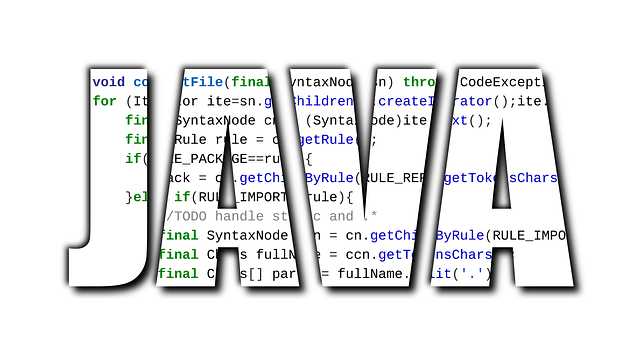Developing Applications with Java EE

Developing Applications with Java EE Course Overview
The Developing Applications with Java EE course introduces delegates to the Java Enterprise Edition API, up to version 7. It explains the core JEE technologies and how they can be used to build large scale web based applications. It also includes an overview of Enterprise Java Beans, the Java Persistence API and JEE security.
Delegates will learn how to develop Java systems that create front end web pages using tools such as Servlets, Java Server Pages and WebSocket, and develop back-end components using EJB, CDI and Bean Validation. In addition, we will show how technologies such as JSON, JMS and Restful Web Services can be integrated into the overall solution.
Exercises and examples are used throughout the course to give practical hands-on experience with the techniques covered.
---------------------------------------------------------------------------------------------------------------------------------------
Who will the Course Benefit?
The Developing Applications with Java EE course is aimed at those who need to develop robust, flexible, extendable and maintainable software using the Java enterprise architecture. Roles include programmers, designers, architects, testers and anyone who needs a good understanding of the Java Enterprise Edition solution.
-------------------------------------------------------------------------------------------------------------------------------------------
Course Objectives
This course aims to provide the delegate with the knowledge to be able to produce secure, scalable and maintainable enterprise solutions using Java code within the Java Enterprise Edition environment. This incorporates web-based technologies such as Servlets, JSP and WebSocket, via linking solutions like JSON and CDI, to back end architectures using EJB, JMS and JPA.
-------------------------------------------------------------------------------------------------------------------------------------------
This is a Developing Applications with Java EE course by Uplatz.
Developing Applications with Java EE
Developing Applications with Java EE Training Course
Course Introduction
- Administration and Course Materials
- Course Structure and Agenda
- Delegate and Trainer Introductions
Session 1: OVERVIEW
- The JEE Environment
- System Architecture
- Putting It All Together
Session 2: INTRODUCTION TO JAVA WEB TECHNOLOGY
- Web Applications, CGI and the Role of Java
- 3-tier Architecture
- Understand Model-View-Controller (MVC) Architecture
- Why Use Servlets and JSP
- Web Application Structures
Session 3: SERVLETS
- Servlets and HTTP Requests
- The HTTP Servlet Model
- Writing an HTTP Servlet
- Executing an HTTP Servlet
- Request Parameters
Session 4: SERVLET PARAMETERS
- Servlet Initialization Parameters
- Servlet Context Parameters
- Web Application State Using Servlets
- Session Management
Developing Applications with Java EE Training Course
Session 5: CONTROLLER FACILITIES
- The HTTP Servlet Lifecycle
- Servlet Filters
- Servlet Listeners
Session 6: SERVLET ISSUES
- Threading Issues
- Exception Handling
- Error pages
- Using Annotations to Configure Servlets
Session 7: JAVA SERVER PAGES - JSP
- How Java Server Pages Work
- Creating a Java Server Page
- JSP / XML Elements
- Servlet To JSP Request Dispatching
- Action Elements
- Implicit Objects
- Error Pages
Session 8: JSP TAG LIBRARIES
- Custom Tags and Tag Libraries
- Commercially available tag libraries
- Write JSP Using Standard Tags
Developing Applications with Java EE Training Course
Session 9: JSP EXPRESSION LANGUAGE
- JSP Expression Language
- EL expressions
- Variables
- Functions
Session 10: USING JSON
- The Java API for JSON Processing
- The Streaming API
- The Object Model API
Session 11: WEBSOCKET
- Why use WebSocket?
- Annotated and Programmatic Endpoints
- Client and Server Endpoints
- Encoders and Decoders
Session 12: ENTERPRISE JAVA BEANS - EJB
- Why EJBs?
- The EJB Architecture
- The EJB Container
- Session Beans
Developing Applications with Java EE Training Course
Session 13: CONTEXTS AND DEPENDENCY INJECTION
- Bean Discovery Modules
- Life Cycle Callbacks
- Qualifiers
- Producers and Disposers
- Interception
- Decoration
- Events
Session 14: BEAN VALIDATION
- Built in Constraints
- Custom Constraints
- Method Constraints
- Validation Groups
Session 15: JDBC
- Connecting to Databases
- Statements
- Result Sets
- Prepared Statement Objects
- Stored Procedures
Session 16: JAVA PERSISTENCE API
- Java Persistence Specification
- Object Relational Mapping
- Creating an Entity Class
- Controlling the JPA Life Cycle
- Deploying Entity Classes
Developing Applications with Java EE Training Course
Session 17: JAVA MESSAGING SERVICE
- Message Domains
- Asynchronous Message Consumption
- Transactions
- Creating Message-Driven Beans
- Utilising Life Cycle Events
Session 18: JAX-RS RESTFUL WEB SERVICES
- Adding JAX-RS Annotations
- Using HTTP Request Headers
- Mapping URLs to Java
Session 19: JAX-WS SOAP WEB SERVICES
- The Web Services Protocol Stack
- SOAP, WSDL and UDDI
- Web Services with JAX-WS
Session 20: JEE SECURITY
- Container Managed Security
- Authentication Methods
- Defining Roles
- Security Users and Groups








